Uncovering secrets of ancient Chalcedon beneath modern Kadikoy
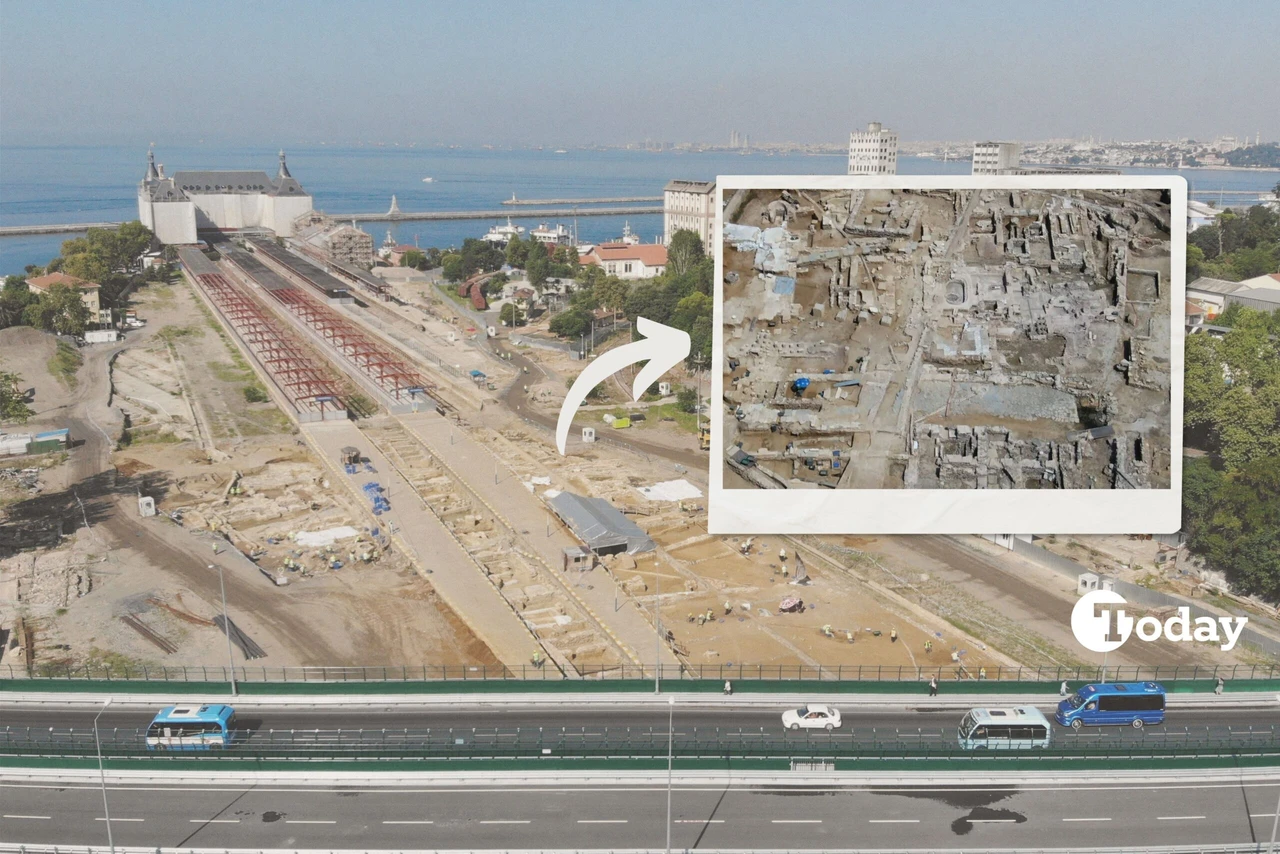 A photo collage showing aerial images of the archaeological site discovered during restoration work at Haydarpasa Station in Kadikoy, Istanbul, Türkiye. (Photo collage by Koray Erdogan/Türkiye Today)
A photo collage showing aerial images of the archaeological site discovered during restoration work at Haydarpasa Station in Kadikoy, Istanbul, Türkiye. (Photo collage by Koray Erdogan/Türkiye Today)
Now one of the liveliest and most modern districts in Istanbul, Kadikoy’s roots stretch far deeper into history than many realize. Originally founded around 675 B.C., the area was first settled by the Phoenicians, who established a thriving trade colony named Harhadon in the Fikirtepe region around 1,000 B.C.
This powerful settlement expanded across the coast, forming a kingdom stretching to modern-day Izmit (Kocaeli).
Later, Greek settlers from Megara in Attica arrived and built a new city near Moda headland and Yogurtcu meadow, naming it Chalcedon—the “City of Copper.”
Home to the famed Temple of Apollo, Chalcedon became an important religious and cultural center. Haydarpasa Meadow, meanwhile, served as a local horse racing ground.
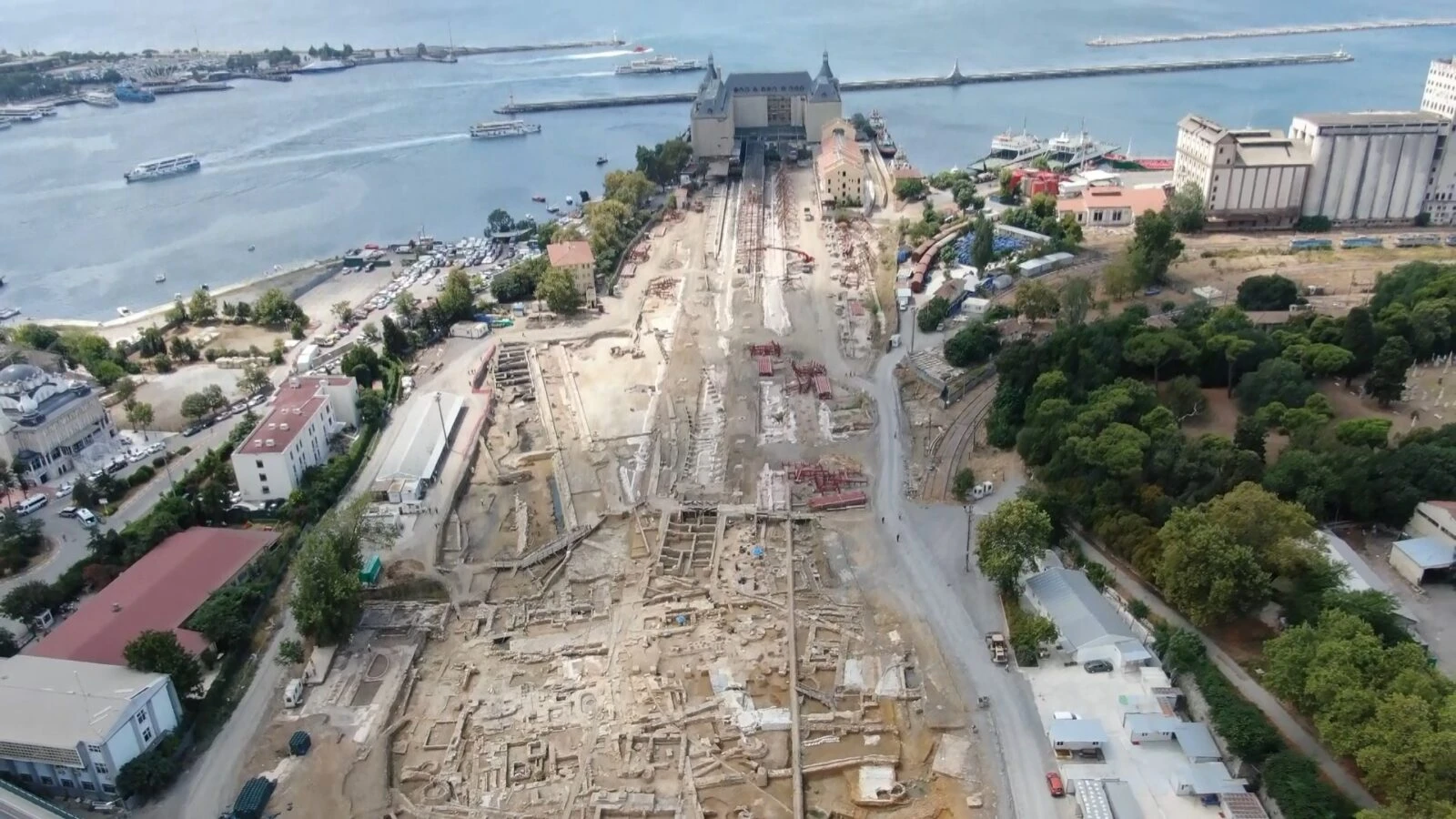
Prophecy behind the ‘Chalcedon’ name
According to legend, in the seventh century B.C., Byzas, the son of the king of Megara, sought the advice of an oracle to establish a new colony. The oracle directed him toward a land “opposite the country of the blind.” This curious phrase was interpreted in different ways.
Linguistically, the name Chalcedon stems from the Greek words chalcos (copper or silver) and don (tooth or city), interpreted as “Copper Tooth” or “Copper City.” However, over time, this etymology was lost in translation, and the city came to be known as “the land of the blind.”
Ancient historian Herodotus offered another interpretation. When Byzas looked across the Bosphorus from Sarayburnu and saw that people had settled in Chalcedon instead of the more strategically advantageous spot on the other side, he remarked, “They must have been blind to choose that place.” Thus, the name “land of the blind” stuck.
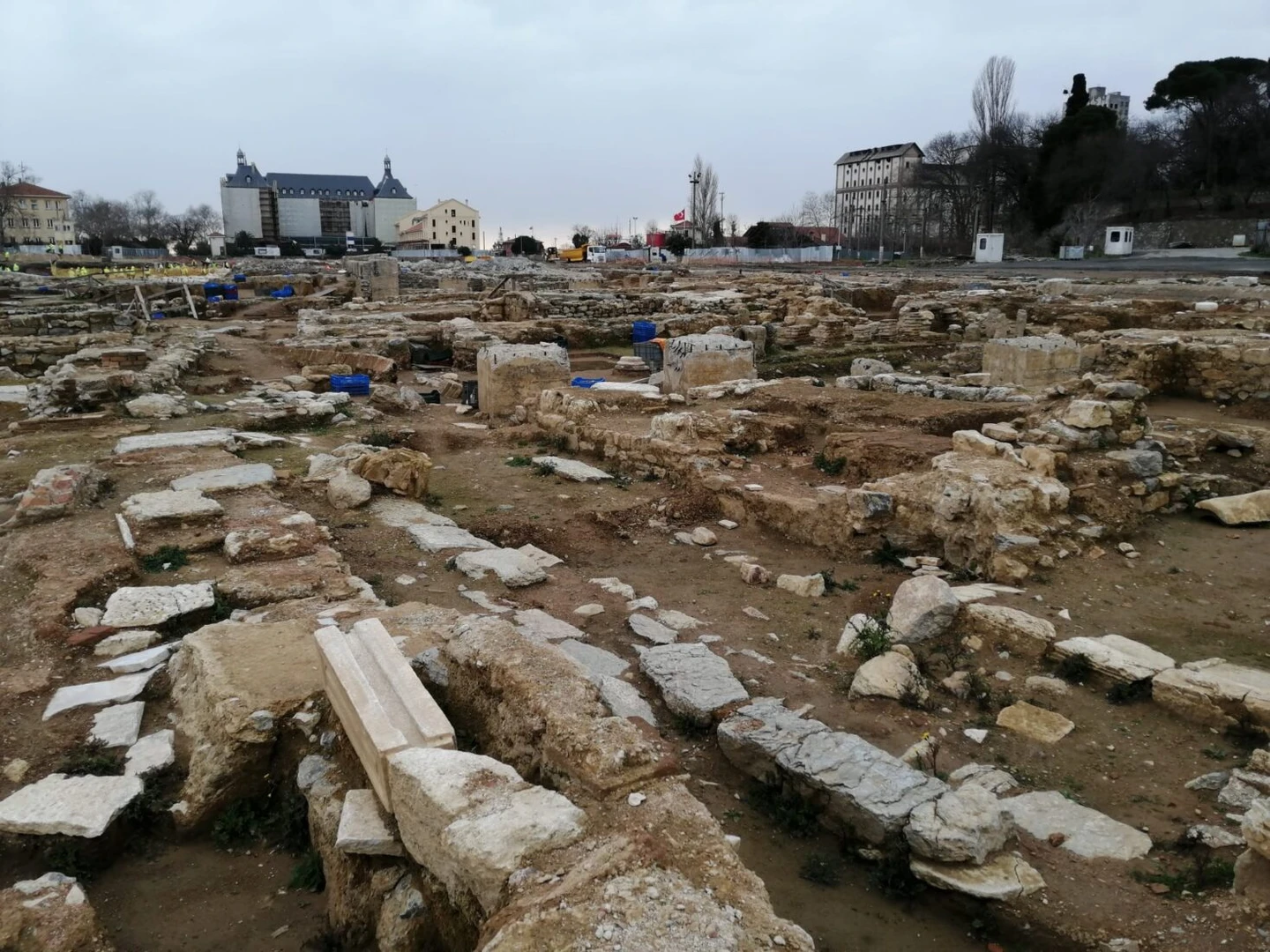
Unearthing the ancient city beneath Haydarpasa
Excavations in the area began in earnest in June 2018 during renovations of the Haydarpasa Train Station for high-speed rail integration. When workers stumbled upon ancient ruins, the area was immediately declared a protected archaeological site.
Findings from these digs have proven critical for understanding both Istanbul and Kadikoy’s ancient past. Among the most significant discoveries are ruins from the early Byzantine period, including a vast bathhouse complex—an essential feature for a port city hosting weary travelers from across the seas. This aligns with the area’s identification as the western port of ancient Chalcedon.
Haydarpasa, one of Chalcedon’s two known harbors, once allowed ships to dock as far inland as modern-day Sogutlucesme Train Station. The second harbor was situated at the mouth of the Kurbagalidere stream.
Archaeologists have also confirmed that the original train station in the region dates back to 1872, and the need for expansion led to extensive land reclamation—creating a 750-meter artificial extension into the sea.

Lost church of Saint Bassa
One of the most intriguing finds is the Church of Saint Bassa. According to archaeologists, Saint Bassa was a noblewoman who converted to Christianity during the late pagan Roman period.
She was killed—burned alive during an Apollo festival—and was later canonized.

The church built in her honor included a hypogeum, or vaulted underground burial chamber, where multiple skeletons have been found layered on top of one another.
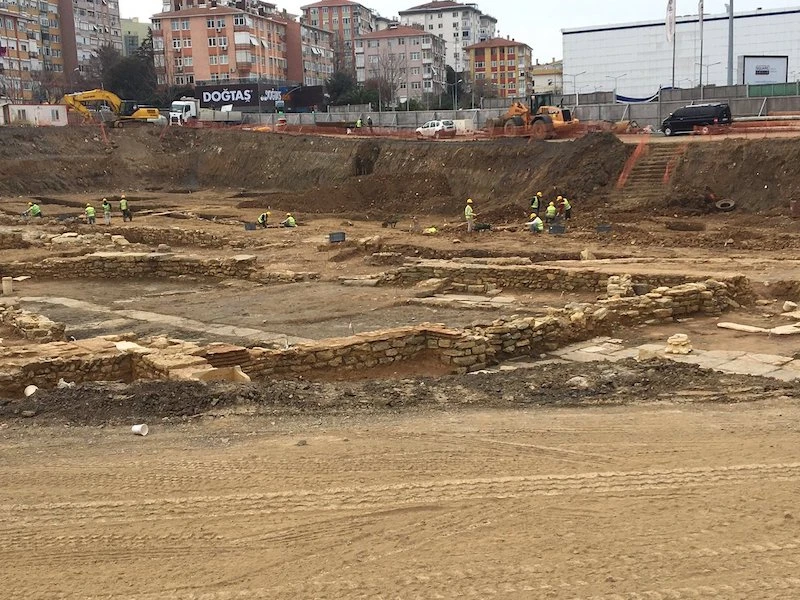
A Byzantine boulevard beneath a modern mall
In 2019, another section of the ancient Byzantine boulevard uncovered near Haydarpasa was traced to a vacant lot behind the Nautilus Shopping Mall in Kadikoy. This early Byzantine-era street, approximately 5–6 meters (16.4-19.6 feet) wide, had shops lining both sides, suggesting a commercial continuity in the area stretching back more than a millennium.
Marble columns, capitals, and bases were also unearthed, indicating the architectural sophistication of this ancient market street.
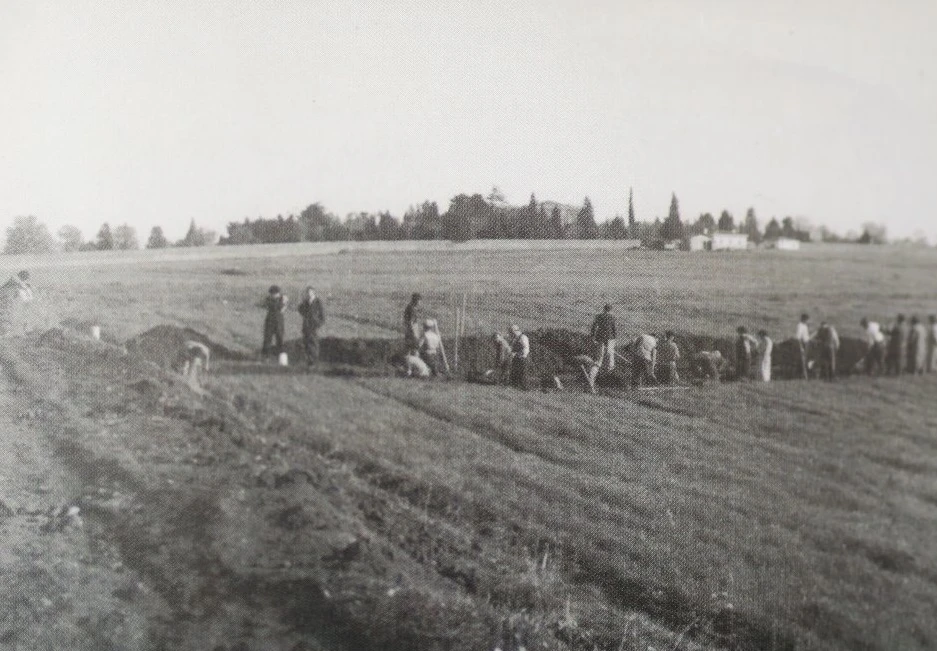
Prehistoric Fikirtepe pushes Kadikoy’s history back 8,500 years
Archaeological findings in Fikirtepe trace Kadikoy’s history back to the Neolithic period, about 8,500 years ago.
Simple huts, early tools, and evidence of agriculture suggest a settled lifestyle and provide insight into the region’s earliest inhabitants.
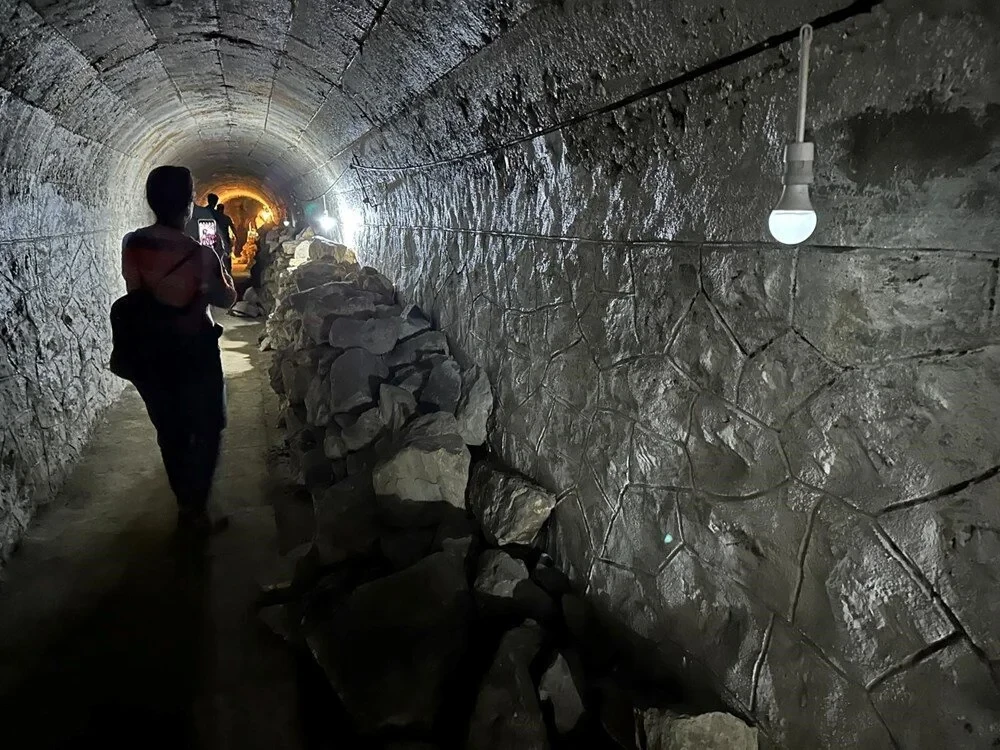
Underground tunnels from World War II
Kadikoy’s underground secrets extend far beyond ancient times. During World War II, fearing a possible German invasion from Thrace, Türkiye constructed military tunnels connecting Selimiye Barracks to Haydarpasa Station.
These shelters were designed to allow troop movements without exposure to aerial attacks. One tunnel entrance, now partially collapsed, stretches 370 meters and is believed to branch into kilometers-long networks beneath the city.
With each new layer unearthed, Istanbul’s Asian side continues to reveal a dynamic and multicultural history. Ancient Chalcedon, once overshadowed by Byzantium, is finally reclaiming its place on the archaeological map of Türkiye.



